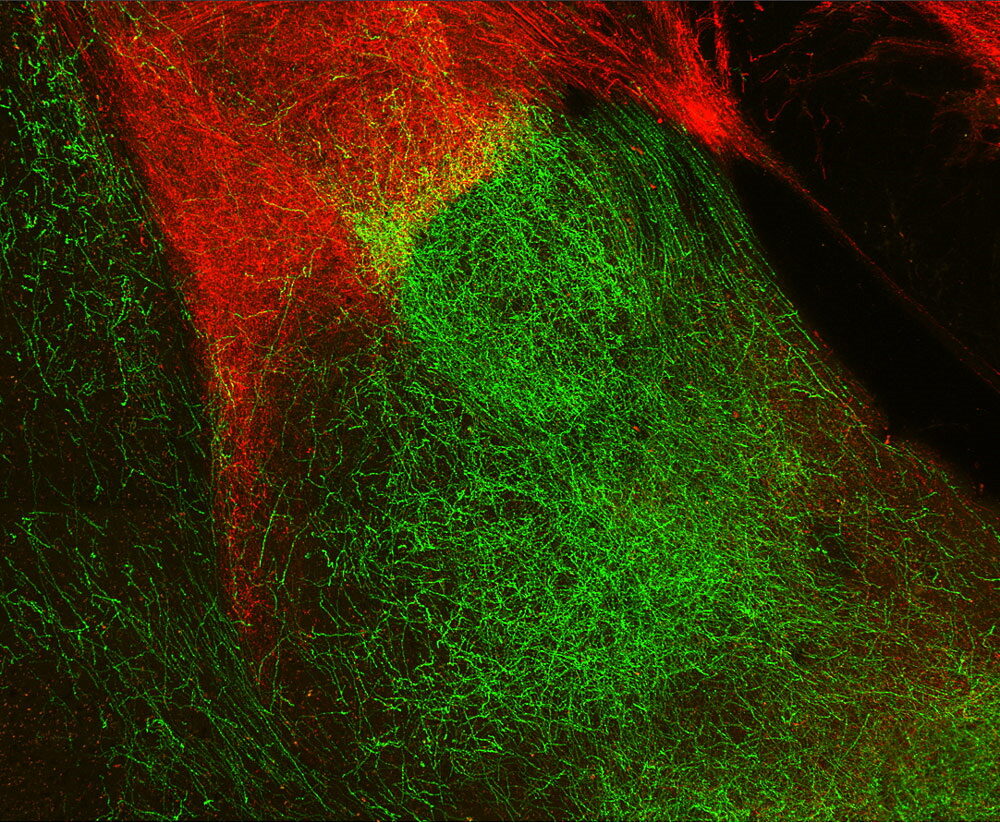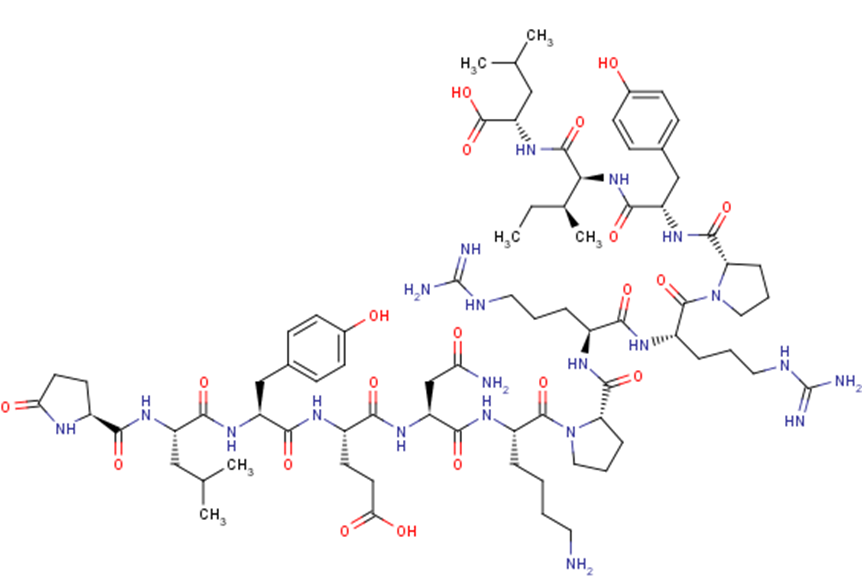
You're on the vacation of a lifetime in Kenya, traversing the savanna on safari, with the tour guide pointing out elephants to your right and lions to your left. Years later, you walk into a florist's shop in your hometown and smell something like the flowers on the jackalberry trees that dotted the landscape. When you close your eyes, the store disappears and you're back in the Land Rover. Inhaling deeply, you smile at the happy memory.
Now let's rewind. You're on the vacation of a lifetime in Kenya, traversing the savanna on safari, with the tour guide pointing out elephants to your right and lions to your left. From the corner of your eye, you notice a rhino trailing the vehicle. Suddenly, it sprints toward you, and the tour guide is yelling to the driver to hit the gas. With your adrenaline spiking, you think, "This is how I am going to die." Years later, when you walk into a florist's shop, the sweet floral scent makes you shudder.
"Your brain is essentially associating the smell with positive or negative" feelings, said Hao Li, a postdoctoral researcher at the Salk Institute for Biological Studies in California. Those feelings aren't just linked to the memory; they are part of it: The brain assigns an emotional "valence" to information as it encodes it, locking in experiences as good or bad memories.
And now we know how the brain does it. As Li and his team reported recently in Nature, the difference between memories that conjure up a smile and those that elicit a shudder is established by a small peptide molecule known as neurotensin. They found that as the brain judges new experiences in the moment, neurons adjust their release of neurotensin, and that shift sends the incoming information down different neural pathways to be encoded as either positive or negative memories.
The discovery suggests that in its creation of memories, the brain may be biased toward remembering things fearfully — an evolutionary quirk that may have helped to keep our ancestors cautious.
The findings "give us significant insights into how we deal with conflicting emotions," said Tomás Ryan, a neuroscientist at Trinity College Dublin who was not involved in the study. It "has really challenged my own thinking in how far we can push a molecular understanding of brain circuitry."
It also opens opportunities to probe the biological underpinnings of anxiety, addiction and other neuropsychiatric conditions that may sometimes arise when breakdowns in the mechanism lead to "too much negative processing," Li said. In theory, targeting the mechanism through novel drugs could be an avenue to treatment.
"This is really an extraordinary study" that will have a profound impact on psychiatric concepts about fear and anxiety, said Wen Li, an associate professor at Florida State University who studies the biology of anxiety disorders and was not involved in the study.
Dangerous Berries
Neuroscientists are still far from understanding exactly how our brains encode and remember memories — or forget them, for that matter. Valence assignment is nonetheless seen as an essential part of the process for forming emotionally charged memories.
The ability of the brain to record environmental cues and experiences as good or bad memories is critical for survival. If eating a berry makes us very sick, we instinctively avoid that berry and anything that looks like it thereafter. If eating a berry brings delicious satisfaction, we may seek out more. "To be able to question whether to approach or to avoid a stimulus or an object, you have to know whether the thing is good or bad," Hao Li said.
The neuroscientists Kay Tye and Hao Li, a postdoctoral researcher in her laboratory at the Salk Institute for Biological Studies, identified a small peptide molecule, neurotensin, as the signal that determined whether memories were encoded as positive.
Memories that link disparate ideas — like "berry" and "sickness" or "enjoyment" — are called associative memories, and they are often emotionally charged. They form in a tiny almond-shaped region of the brain called the amygdala. Though traditionally known as the brain's "fear center," the amygdala responds to pleasure and other emotions as well.
One part of the amygdala, the basolateral complex, associates stimuli in the environment with positive or negative outcomes. But it was not clear how it does that until a few years ago, when a group at the Massachusetts Institute of Technology led by the neuroscientist Kay Tye discovered something remarkable happening in the basolateral amygdala of mice, which they reported in Nature in 2015 and in Neuron in 2016.
Tye and her team peered into the basolateral amygdala of mice learning to associate a sound with either sugar water or a mild electric shock and found that, in each case, connections to a different group of neurons strengthened. When the researchers later played the sound for the mice, the neurons that had been strengthened by the learned reward or punishment became more active, demonstrating their involvement in the associated memory.
But Tye's team couldn't tell what was steering the information toward the right group of neurons. What acted as the switch operator?
Dopamine, a neurotransmitter known to be important in reward and punishment learning, was the obvious answer. But a 2019 study showed that although this "feel-good" molecule could encode emotion in memories, it couldn't assign the emotion a positive or negative value.
So the team began looking at the genes expressed in the two areas where positive and negative memories were forming, and the results turned their attention to neuropeptides, small multifunctional proteins that can slowly and steadily strengthen synaptic connections between neurons. They found that one set of amygdala neurons had more receptors for neurotensin than the other.
This finding was encouraging because earlier work had shown that neurotensin, a meager molecule just 13 amino acids long, is involved in the processing of reward and punishment, including the fear response. Tye's team set out to learn what would happen if they changed the amount of neurotensin in the brains of mice.
Tiny Molecule With a Big Personality
What followed were years of surgically and genetically manipulating mouse neurons and recording the behaviors that resulted. "By the time I finished my Ph.D., I had done at least 1,000 surgeries," said Praneeth Namburi, an author on both of the papers and the leader of the 2015 one.
During that time, Tye moved her growing lab across the country from MIT to the Salk Institute. Namburi stayed at MIT — he now studies how dancers and athletes represent emotions in their movements — and Hao Li joined Tye's lab as a postdoc, picking up Namburi's notes. The project was stalled further by the pandemic, but Hao Li kept it going by requesting essential-personnel status and basically moving into the lab, sometimes even sleeping there. "I don't know how he stayed so motivated," Tye said.

Tye's team then taught mice to associate a tone with either a treat or a shock. They found that neurotensin levels increased in the amygdala after reward learning and dropped after punishment learning. By genetically altering the mice's thalamic neurons, they were able to control how and when the neurons released neurotensin. Activating the neurons that released neurotensin into the amygdala promoted reward learning, while knocking out the neurotensin genes strengthened punishment learning.
They also discovered that the assignment of valences to environmental cues promotes active behavioral responses to them. When the researchers prevented the amygdala from receiving information about positive or negative valence by knocking out the thalamic neurons, the mice were slower to collect rewards; in threatening situations, the mice froze rather than running away.
So what do these results suggest would happen if your valence-assignment system broke down — while an angry rhino was charging you, for example? "You would just only slightly care," Tye said. Your indifference in the moment would be recorded in the memory. And if you found yourself in a similar situation later in life, your memory would not inspire you to try urgently to escape, she added.
However, the likelihood that an entire brain circuit would shut down is low, said Jeffrey Tasker, a professor in the brain institute at Tulane University. It's more probable that mutations or other problems would simply prevent the mechanism from working well, instead of reversing the valence. "I would be hard-pressed to see a situation where somebody would mistake a charging tiger as a love approach," he said.
Hao Li agreed and noted that the brain likely has fallback mechanisms that would kick in to reinforce rewards and punishments even if the primary valence system failed. This would be an interesting question to pursue in future work, he added.
One way to study defects in the valence system, Tasker noted, might be to examine the very rare people who don't report feeling fear, even in situations routinely judged as terrifying. Various uncommon conditions and injuries can have this effect, such as Urbach-Wiethe syndrome, which can cause calcium deposits to form in the amygdala, dampening the fear response.
The Brain Is a Pessimist
The findings are "pretty big in terms of advancing our understanding and thinking of the fear circuit and the role of the amygdala," Wen Li said. We are learning more about chemicals like neurotensin that are less well known than dopamine but play critical roles in the brain, she added.
The work points toward the possibility that the brain is pessimistic by default, Hao Li said. The brain has to make and release neurotensin to learn about rewards; learning about punishments takes less work.
Further evidence of this bias comes from the reaction of the mice when they were first put into learning situations. Before they knew whether the new associations would be positive or negative, the release of neurotensin from their thalamic neurons decreased. The researchers speculate that new stimuli are assigned a more negative valence automatically until their context is more certain and can redeem them.
"You're more responsive to negative experiences versus positive experiences," Hao Li said. If you almost get hit by a car, you'll probably remember that for a very long time, but if you eat something delicious, that memory is likely to fade in a few days.
Ryan is more wary of extending such interpretations to humans. "We're dealing with laboratory mice who are brought up in very, very impoverished environments and have very particular genetic backgrounds," he said.
Still, he said, it would be interesting to determine in future experiments whether fear is the actual default state of the human brain — and if that varies for different species, or even for individuals with different life experiences and stress levels.
The findings are also a great example of how integrated the brain is, Wen Li said: The amygdala needs the thalamus, and the thalamus likely needs signals from elsewhere. It would be interesting to know which neurons in the brain are feeding signals to the thalamus, she said.
A recent study published in Nature Communications found that a single fear memory can be encoded in more than one region of the brain. Which circuits are involved probably depends on the memory. For example, neurotensin is probably less crucial for encoding memories that don't have much emotion attached to them, such as the "declarative" memories that form when you learn vocabulary.
For Tasker, the clear-cut relationship that Tye's study found between a single molecule, a function and a behavior was very impressive. "It's rare to find a one-to-one relationship between a signal and a behavior, or a circuit and a function," Tasker said.
Neuropsychiatric Targets
The crispness of the roles of neurotensin and the thalamic neurons in assigning valence might make them ideal targets for drugs aimed at treating neuropsychiatric disorders. In theory, if you can fix the valence assignment, you might be able to treat the disease, Hao Li said.
It's not clear whether therapeutic drugs targeting neurotensin could change the valence of an already formed memory. But that's the hope, Namburi said.
Pharmacologically, this won't be easy. "Peptides are notoriously difficult to work with," Tasker said, because they don't cross the blood-brain barrier that insulates the brain against foreign materials and fluctuations in blood chemistry. But it's not impossible, and developing targeted drugs is very much where the field is headed, he said.
Our understanding of how the brain assigns valence still has important gaps. It's not clear, for example, which receptors the neurotensin is binding to in amygdala neurons to flip the valence switch. "That will bother me until it is filled," Tye said.
Too much is also still unknown about how problematic valence assignments may drive anxiety, addiction or depression, said Hao Li, who was recently appointed as an assistant professor at Northwestern University and is planning to explore some of these questions further in his new lab. Beyond neurotensin, there are many other neuropeptides in the brain that are potential targets for interventions, Hao Li said. We just don't know what they all do. He's also curious to know how the brain would react to a more ambiguous situation in which it wasn't clear whether the experience was good or bad.
These questions linger in Hao Li's brain long after he packs up and goes home for the night. Now that he knows which network of chatty cells in his brain drives the emotions he feels, he jokes with friends about his brain pumping out neurotensin or holding it back in response to every bit of good or bad news.
"It's clear that this is biology, it happens to everyone," he said. That "makes me feel better when I'm in a bad mood."
Yasemin Saplakoglu is a Staff Writer for Quanta Magazine




I do not believe that our brains are so hardwired as to store data that is my nature influenced by emotions that only exist temporarily.